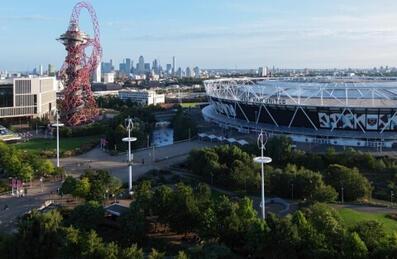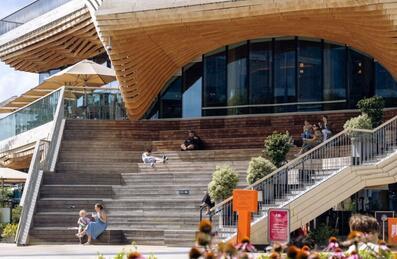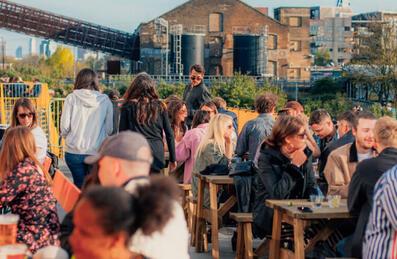
Popular Searches:
Keep up to date
Sign up today for exclusive offers and incredible experiences you won’t want to miss at Queen Elizabeth Olympic Park.
Sign up nowAchieving net zero carbon
The Mayor of London has declared a climate emergency and prepared an associated action plan to help minimise the impacts of climate change on Londoners, and to help limit London’s contribution to the changing climate. LLDC supports the Mayor’s ambition to achieve Zero Carbon by 2030.
Carbon Reduction Efforts
LLDC is committed to net zero carbon in 2030 for Scopes 1 and 2. LLDC and in 2038 for Scope 3. Our approach to achieving net zero carbon has five objectives:
1. To deliver 1.5°C aligned new developments, ensuring they are fit for the future.
2. To decarbonise our existing assets and activities, minimising energy demand and embodied carbon – working in partnership with residents and tenants.
3. To maximise onsite generation and procure renewable energy, initially with robust Renewable Energy Guarantees of Origin (REGOs) and considering potential contribution from additional renewable sources and market mechanisms.
4. To decarbonise the District Heating Network as joint employer for the network’s concession, working in partnership with the operator.
5. To offset residual emissions and be accountable for residual emissions through high quality offsets
District Energy Network
The Park is powered by two energy centres which together form the largest district energy network in the UK. Combined heat and power (CHP) engines and chillers provide heating and cooling to venues, commercial buildings, and residential properties in and around the Park. In addition, a large biomass boiler provides heat to the district energy network. Biomass fuel is sourced predominantly from arboriculture waste within 100km radius of the Park.
The energy centres have been designed for additional boilers and CHP engines to be added to meet energy demand as further developments are added to the Park. The centres’ CHP engines have been designed to use both natural gas and gas that has been blended with biogas, and other alternative fuels with lower carbon content.
Zero Carbon Homes
All homes at Queen Elizabeth Olympic Park are designed to achieve net zero carbon associated with their operational (in use) energy consumption. LLDC’s “Fabric First” approach helps to ensure that energy demand (and subsequent CO₂ emissions) is kept to an absolute minimum through high-performance design and construction methodology.
The document Preparing for a 1.5ºC future sets out LLDC’s vision and aspirations for the built environment within the context of the climate emergency. It provides pragmatic guidance on the delivery of exemplar developments when preparing for a 1.5ºC aligned Paris Agreement future.
Passive Heating Trials
In connected systems such as our district heat network, the ability to predict energy demand is of great importance to system operators concerned with demand-side management. Engaging customers through use of digital technology, proposing dynamic new services and tariffs that contrast the traditional energy supply tariff business model is becoming increasingly desirable for both the end users, generators, and suppliers. Our passive heating trial study focused on the user-engagement aspects of smart heating controls, as a potential method for improving demand predictability and improving the customer experience with residential heating systems.
The study investigated the heating behaviour and perceptions of a sample of 23 residents connected to the district energy network, exploring whether behaviour and perceptions changed following the upgrade of traditional programmable thermostats to smart, wireless heating controllers. The results showed the potential for smart heating control retrofits to increase the ease of controlling heating systems.









